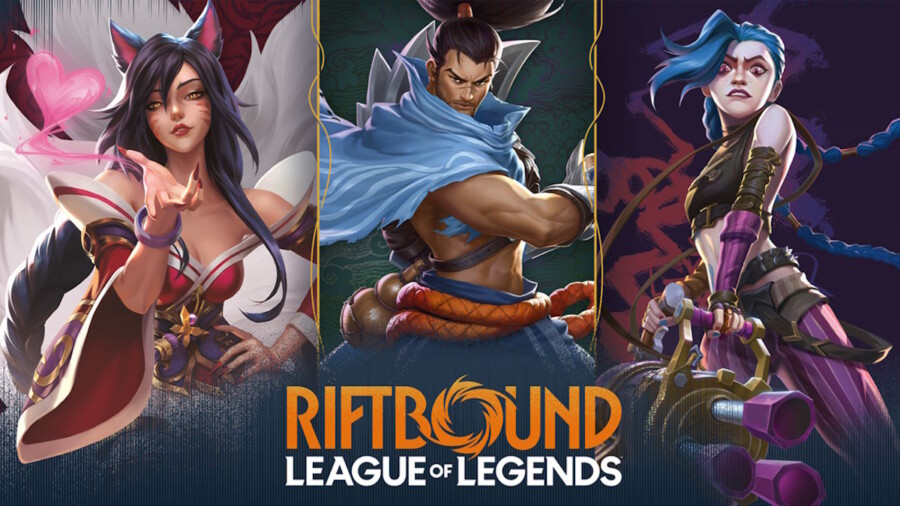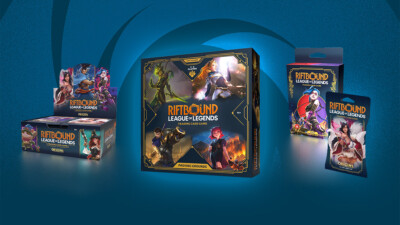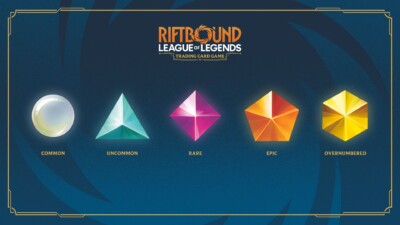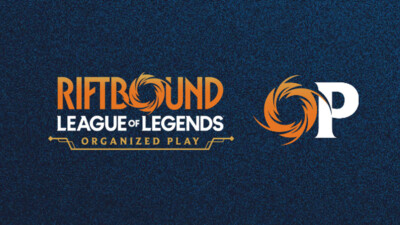League of Legends fans are in for a treat, with a brand new trading card game based on the characters and lore of Runeterra. Players pilot their favorite Champion to a win, and collectors can join the hunt for unique alternate arts and secret overnumbered cards.
What is Riftbound?
Riftbound: League of Legends is a trading card game developed by Riot Games, the creators of League of Legends. It features characters, units, spells, and locations from the franchise, in a physical game you can play with friends, or competitively at events.
Players build their own decks using cards they open from booster packs, or can use pre-made decks that are available to buy. The game can be played in a few different ways: 1v1, 2v2, or in an all-vs-all of 4 (or more) players.
The game was previously known by the codename Project K, before Riftbound was announced as the official title on March 31st, 2025. The name is probably a reference to the Summoner’s Rift battlefield in the game, a place where powerful magic flows.
When is Riftbound’s Release Date?
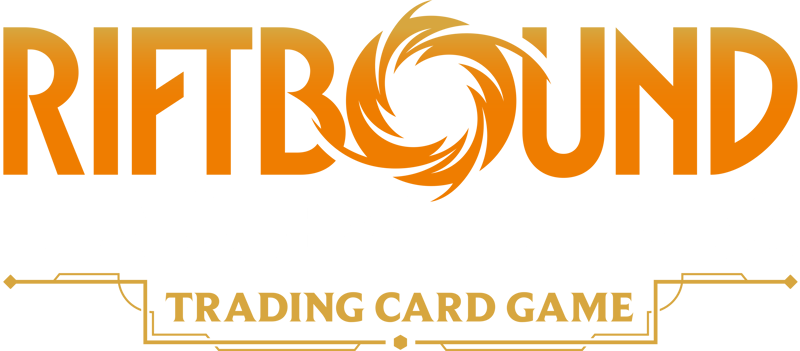
The game will release in China in the Summer of 2025, before other countries. It will release in late October 2025 in the US, Canada, the UK, and some other English-speaking countries. There are plans for further countries and languages in 2026.
UVS Games will be the official publishing and distribution partner. They produce the UniVersus card game, which is a TCG with a set of rules shared across various franchises, as well as distribution for other games.
Set 1 – Riftbound: Origins
The first set is called Origins, and will features over 300 different cards. Champions confirmed to be included in the first set include: Jinx, Viktor, Lee Sin, Lux, Annie, Master Yi, Garen, Yasuo, and Volibear.
There will be various products to buy on release, including:
- Three Champion Decks, with a pre-made 56-card deck, tokens, paper playmat + deck box, learn to play booklet, and a booster pack
- Jinx
- Victor
- Lee Sin
- Origins Proving Grounds – A box set with pre-made decks and accessories for up to four players
- Booster Boxes with 24 booster packs – A case includes six booster boxes
- Individually sleeved booster packs of 14 cards, with Jinx, Ahri, or Yasuo art
What Comes In A Booster Pack?
Booster packs can be bought individually, in a box of 24, or can be found included in starter decks and other products.
A booster pack will contain 14 cards made up of:
- 7 Common Cards
- 3 Uncommon Cards
- 3 Foils – 2 Rare or higher, and 1 of any rarity
- 1 Token Card
Rarities, Foils + Pull Rates
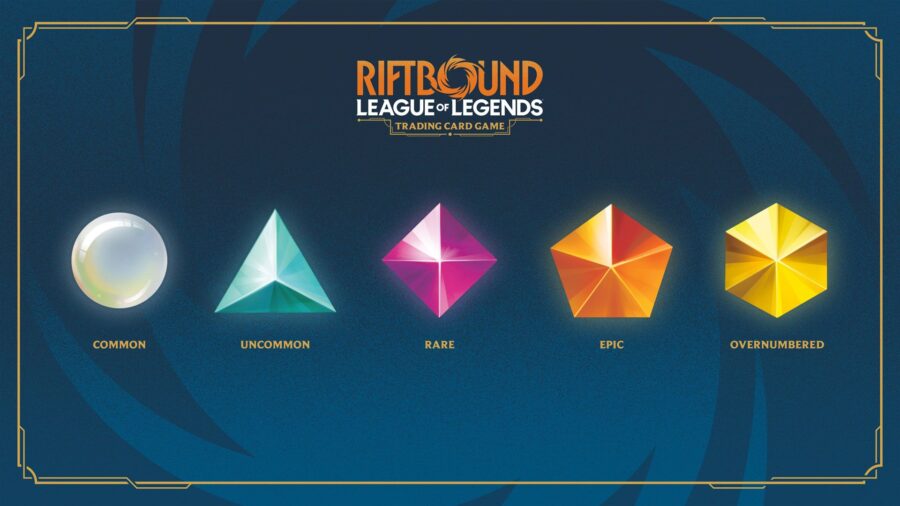
The rarities in order of value are:
- Common
- Uncommon
- Rare
- Epic
- Alternate Art – Have an “a” in the collector number
- Overnumbered – Numbered higher than cards in the main set aka 299/298
Cards of any rarity can be foil, but Rare, Epic, and Overnumbered cards are always foil.
There are 24 alternate arts of Champion units in the first set, plus alternate arts of every Rune card. They all have an “a” after the collector number, so Ahri – Alluring has an alternate art, at number 066a/298.
Any card where the first number in the bottom left is higher than the second number is an Overnumbered card. For example, Origins has 298 cards. Any card with something like 299/298, or 305/298 is Overnumbered.
These are way rarer to get, and not all of them will be revealed until they’re shown off by players who pull them in packs.
We don’t know the exact pull rates, but we do know there are “more than 2 special alt art cards appearing in every (booster) box”.
How Do You Play Riftbound?
Each player brings a deck made up of 56 cards, with the following:
- 1 Legend
- 3 Battlefields – Black card backs
- 12 Runes – White card backs
- 40 card main deck, including a Champion – Maximum of 3 copies of any card
The players choose a Battlefield to start with randomly, and will have their Legend and corresponding Champions out on the board. Each player draws four cards to start, and can alter their hand (“mulligan”) up to two cards to the bottom of their deck to draw that many from their main deck.
On a player’s turn, they’ll ready any exhausted cards i.e. if a card is horizontal (tapped), put it vertical. They’ll also resolve any Start of Turn abilities and score a point for each Battlefield controlled. They’ll take the top two cards from the Rune deck and put them into the Rune area, then draw a card from the Main deck.
On a player’s turn, they can play cards from their hand by paying the costs, or use abilities on cards on the board. To win, you’ll need to collect 8 points from controlling Battlefields. To do that, you’ll need to move Units to them, or enter Combat with Units already on the Battlefield.
Is There An Online Client?
There is no official online client or way to play announced at the moment, but it’s almost certain there will be one. There is an unofficial mod for the Tabletop Simulator engine on Steam.
Is This Like Legends Of Runeterra?
The game has totally different rules and bears no relation to Legends of Runeterra, which is an online-only game in the League of Legends franchise. The game was popular upon release, but it wasn’t profitable as it wasn’t monetized similarly to other online TCGs. Since then, support and popularity has waned.
Will There Be Official Organized Play + Tournaments?
There are already plans for weekly local play events, as well as a cmopetitive cicrcuit. Summoner Skirmish events are local events happening twice per set, with participation and Top 8 promo cards, and a playmat. Winning one of these gives players a “bye” in the first rounds of regionals.
The larger regional events are starting in December. Players can compete for promo cards and cash prizes, which also lets people qualify for larger Championship events. These are due to take place from 2026.

